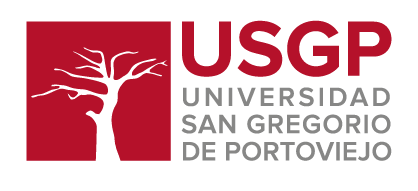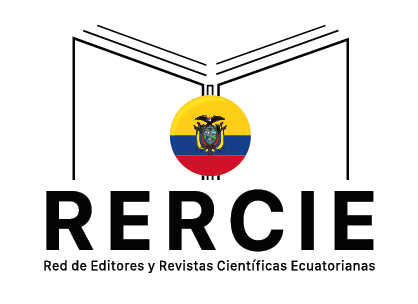Impacto del liderazgo transformacional, la gestión de la felicidad y el estrés laboral sobre la intención de rotación
DOI:
https://doi.org/10.36097/rsan.v1i63.3589Palabras clave:
felicidad laboral, Liderazgo transformacional, rotación de personal, sector público, sector privado, estrés laboralResumen
En el contexto de la transformación laboral y el incremento en la rotación de talento, comprender los factores que influyen en la retención de empleados se ha convertido en una prioridad estratégica para las organizaciones modernas. Este estudio analiza el efecto del liderazgo transformacional sobre la intención de rotación, incorporando la gestión de la felicidad y el estrés laboral como variables mediadoras. Asimismo, explora posibles diferencias entre los sectores público y privado en México. Se empleó un diseño cuantitativo, no experimental y transversal, mediante un cuestionario estructurado aplicado a una muestra de 414 empleados de diversas instituciones educativas, gubernamentales y corporativas. Los datos se analizaron mediante Modelado de Ecuaciones Estructurales basado en Covarianzas (CB-SEM) y análisis multigrupo. Los resultados indican que el liderazgo transformacional influye positivamente en la gestión de la felicidad, reduciendo el estrés y la intención de rotar. Aunque el estrés laboral incrementó dicha intención, su efecto mediador no fue estadísticamente significativo. También se observaron diferencias sectoriales: en el sector privado, el liderazgo transformacional actuó como amortiguador del estrés, mientras que, en el sector público, la gestión de la felicidad desempeñó un papel más relevante en la reducción de la rotación. Los hallazgos ofrecen información valiosa para el desarrollo de políticas organizacionales centradas en las personas, adaptadas a las dinámicas sectoriales y alineadas con los Objetivos de Desarrollo Sostenible relacionados con el trabajo decente y el bienestar emocional.
Descargas
Citas
Adiguna, A. a. B. W., &Suwandana, I. G. M. (2023). The relationship between burnout, work stress, and turnover intention on Non-Permanent (Contract) employees: Study at the Communication and Information Office of Badung Regency, Indonesia. European Journal of Business Management and Research, 8(3), 104–107. https://doi.org/10.24018/ejbmr.2023.8.3.1964
Alhajaj, W. E., & Ahmad, S. Z. (2023). The effectiveness of human resource management practices, work engagement and self-efficacy in minimising talent turnover intention. International Journal of Productivity and Performance Management, 73(8), 2414–2440. https://doi.org/10.1108/ijppm-02-2023-0090
Álvarez, G. V. V., & Vidal, A. A. (2020). Los factores de riesgo psicosocial: perspectiva para el enfoque del liderazgo transformacional del personal administrativo de una Institución de Educación Superior. Revista San Gregorio, 1(40). https://doi.org/10.36097/rsan.v1i40.1425
Baş, M. (2022). The mediating role of work stress in the relationship between work engagement and turnover intention. Business and Management Studies an International Journal, 10(3), 1161–1171. https://doi.org/10.15295/bmij.v10i3.2097
Bass, B. M. (1985). Leadership and performance beyond expectations.
Bobek, V., Kreinecker, J., & Horvat, T. (2024). Changes in the world of work: an Austrian investigation. In Springer studies on populism, identity politics and social justice (pp. 91–117). https://doi.org/10.1007/978-3-031-56415-4_4
Bothma, C. F., & Roodt, G. (2013). The validation of the turnover intention scale. SA Journal of Human Resource Management, 11(1). https://doi.org/10.4102/sajhrm.v11i1.507
Browne, M. W., &Cudeck, R. (1992). Alternative ways of assessing model fit. Sociological Methods & Research, 21(2), 230–258. https://doi.org/10.1177/0049124192021002005
Byrne, B. M. (2016). Structural equation modeling with AMOS: basic concepts, applications, and programming. http://cds.cern.ch/record/1320709
Cahyaningrum, R., & Santosa, A. (2024). The influence of work life balance, happiness at work and work overload on turnover intention at PT Multi Garmenjaya Yogyakarta. AURELIA JurnalPenelitian Dan Pengabdian Masyarakat Indonesia, 4(1), 109–122. https://doi.org/10.57235/aurelia.v4i1.3382
Çakır, T., &Özgenel, M. (2024). The relationship between transformational leadership and school happiness: the mediating role of school culture. Research in Educational Administration & Leadership, 9(3), 253–293. https://doi.org/10.30828/real.1377849
Carless, S. A., Wearing, A. J., & Mann, L. (2000). A short measure of transformational leadership. Journal of Business and Psychology, 14(3), 389–405. https://doi.org/10.1023/a:1022991115523
Cezarino, L. O., Liboni, L. B., Hunter, T., Pacheco, L. M., & Martins, F. P. (2022). Corporate social responsibility in emerging markets: Opportunities and challenges for sustainability integration. Journal of Cleaner Production, 362, 132224. https://doi.org/10.1016/j.jclepro.2022.132224
Chang, Y., Kim, C., & Yoo, J. (2024). Does justice matter? Evaluating the usefulness of commitment and innovative work behavior as a predictor of turnover intention of Korean employees. Sustainability, 16(3), 1054. https://doi.org/10.3390/su16031054
Cheung, G. W., & Rensvold, R. B. (2002). Evaluating Goodness-of-Fit Indexes for testing measurement invariance. Structural Equation Modeling a Multidisciplinary Journal, 9(2), 233–255. https://doi.org/10.1207/s15328007sem0902_5
Conger, J. A. (1999). Charismatic and transformational leadership in organisations. The Leadership Quarterly, 10(2), 145–179. https://doi.org/10.1016/s1048-9843(99)00012-0
Cortés-Denia, D., Luque-Reca, O., Lopez-Zafra, E., & Pulido-Martos, M. (2023). Does authentic leadership promote higher job satisfaction in public versus private organisations? Exploring the role of vigor and engagement. Heliyon, 9(1), e12906. https://doi.org/10.1016/j.heliyon.2023.e12906
Dash, G., & Paul, J. (2021). CB-SEM vs PLS-SEM methods for research in social sciences and technology forecasting. Technological Forecasting and Social Change, 173, 121092. https://doi.org/10.1016/j.techfore.2021.121092
Deci, E. L., Olafsen, A. H., & Ryan, R. M. (2017). Self-Determination Theory in Work Organizations: The State of a Science. Annual Review of Organizational Psychology and Organizational Behavior, 4(1), 19–43. https://doi.org/10.1146/annurev-orgpsych-032516-113108
Díaz-García, G. A., De Urbina Criado, M. O., &Ravina-Ripoll, R. (2024). Happy leadership, now more than ever. International Journal of Happiness and Development, 8(3), 223–243. https://doi.org/10.1504/ijhd.2024.137967
Dima, G., Schmitz, L. M., & Șimon, M. (2021). Job Stress and Burnout among Social Workers in the VUCA World of COVID-19 Pandemic. Sustainability, 13(13), 7109. https://doi.org/10.3390/su13137109
Feitor, S., Martins, T., & Borges, E. (2022). Shorted Happiness at Work Scale: Psychometric proprieties of the Portuguese version in a sample of nurses. International Journal of Environmental Research and Public Health, 20(1), 658. https://doi.org/10.3390/ijerph20010658
Firmansyah, D., &Wahdiniwaty, R. (2023). Happiness Management: Theoretical, practical and impact. International Journal of Business Law and Education, 4(2), 747–756. https://doi.org/10.56442/ijble.v4i2.244
Fornell, C., & Larcker, D. F. (1981). Evaluating Structural Equation Models with Unobservable Variables and Measurement Error. Journal of Marketing Research, 18(1), 39–50. https://doi.org/10.1177/002224378101800104
Galvan-Vela, E., Ripoll, R. R., Altamirano, M. a. S., & Rodriguez, D. M. S. (2024). El trinomio compromiso, satisfacción y justicia organizacional en el binomio felicidad e intención de rotar. Retos, 14(28), 187–202. https://doi.org/10.17163/ret.n28.2024.01
Grum, D. K., &Babnik, K. (2022). The psychological concept of social sustainability in the workplace from the perspective of sustainable goals: A systematic review. Frontiers in Psychology, 13. https://doi.org/10.3389/fpsyg.2022.942204
Gunasekra, K. A., & Perera, B. a. K. S. (2023). Defining occupational stress: A systematic literature review. FARU Journal, 10(1), 104–111. https://doi.org/10.4038/faruj.v10i1.194
Hair, J. F., Jr, Hult, G. T. M., Ringle, C., & Sarstedt, M. (2019). A primer on Partial Least squares Structural Equation Modeling (PLS-SEM). SAGE Publications.
Hanoum, F. C., Rizan, M., &Handaru, A. W. (2024). The role of Work-Life Balance, work stress, and Work-Family conflict in creating job satisfaction and their impact on turnover Intention in nurses at Level I Health Facilities Hospital in Karawang. Critical Care Nursing Quarterly, 47(4), 346–369. https://doi.org/10.1097/cnq.0000000000000527
Hartanto, O. (2024). Exploring comprehensive approaches to employee health and happiness. Advances in Human Resource Management Research, 2(1), 50–62. https://doi.org/10.60079/ahrmr.v2i1.246
Henseler, J., Ringle, C. M., & Sarstedt, M. (2015). A new criterion for assessing discriminant validity in variance-based structural equation modeling. Journal of the Academy of Marketing Science, 43(1), 115–135. https://doi.org/10.1007/s11747-014-0403-8
Hu, L., & Bentler, P. M. (1999). Cutoff criteria for fit indexes in covariance structure analysis: Conventional criteria versus new alternatives. Structural Equation Modeling a Multidisciplinary Journal, 6(1), 1–55. https://doi.org/10.1080/10705519909540118
Jiménez-Marín, G., Zambrano, R. E., Galiano-Coronil, A., & Ravina-Ripoll, R. (2021). Business and Energy Efficiency in the Age of Industry 4.0: The Hulten, Broweus and Van Dijk Sensory Marketing Model Applied to Spanish Textile Stores during the COVID-19 Crisis. Energies, 14(7), 1966. https://doi.org/10.3390/en14071966
Jimoh, A. L., Yahay, I. J., & Salman, A. (2023). The Moderating Effect of Transformational Leadership on the Relationship between Employee Happiness and Organizational Citizenship Behavior. Wayamba Journal of Management, 14(2), 68–84. https://doi.org/10.4038/wjm.v14i2.7608
Kaiser, H. F. (1974). An index of factorial simplicity. Psychometrika, 39(1), 31–36. https://doi.org/10.1007/bf02291575
Kaur, R., & Kaur, G. (2023). Managerial leadership and turnover intentions with the mediating role of employee happiness: an empirical study based on private universities. The TQM Journal, 36(2), 616–633. https://doi.org/10.1108/tqm-08-2022-0253
Kyambade, M., & Namatovu, A. (2025). Pleasurable emotional states in healthcare organisations: the mediation role of employee wellbeingwellbeing on transformational leadership and job satisfaction. Leadership in Health Services. https://doi.org/10.1108/lhs-06-2024-0052
Mercader, V., Galván-Vela, E., Ravina-Ripoll, R., & Popescu, C. R. G. (2021). A Focus on Ethical Value under the Vision of Leadership, Teamwork, Effective Communication and Productivity. Journal of Risk and Financial Management, 14(11), 522. https://doi.org/10.3390/jrfm14110522
Mercader, V., Galván-Vela, E., Salazar-Altamirano, M. A., & Ravina-Ripoll, R. (2025). Business ethics, corporate social responsibility and fostering innovation as predictors of employee happiness. Suma de Negocios, 16(34), 92–103. https://doi.org/10.14349/sumneg/2025.V16.N34.A9
Mulaik, S. A., James, L. R., Van Alstine, J., Bennett, N., Lind, S., & Stilwell, C. D. (1989). Evaluation of goodness-of-fit indices for structural equation models. Psychological Bulletin, 105(3), 430–445. https://doi.org/10.1037/0033-2909.105.3.430
Niemiec, R. (2020). Transformational leadership and employee psychological needs. INFLUENCE International Journal of Science Review, 2(3), 20–27. https://doi.org/10.54783/influence.v2i3.105
Özer, Ö., Özkan, O., Özmen, S., &Çirakli, Ü. (2022). Investigation of the perception of occupational safety, work stress and happiness in healthcare workers. Journal of Health Management, 25(4), 813–819. https://doi.org/10.1177/09720634221078413
Parker, D. F., & DeCotiis, T. A. (1983). Organisational determinants of job stress. Organisational Behavior and Human Performance, 32(2), 160–177. https://doi.org/10.1016/0030-5073(83)90145-9
Pila, G. C. C., Suazo, S. V. V., & Ortiz, J. P. H. (2023). Calidad de vida en el trabajo y síntomas de estrés laboral de enfermeras/os en Ecuador. Revista San Gregorio, 1(55), 46–64. https://doi.org/10.36097/rsan.v1i55.2292
Podsakoff, P. M., MacKenzie, S. B., Lee, J., & Podsakoff, N. P. (2003). Common method biases in behavioral research: A critical review of the literature and recommended remedies. Journal of Applied Psychology, 88(5), 879–903. https://doi.org/10.1037/0021-9010.88.5.879
Poon, Y. R., Lin, Y. P., Griffiths, P., Yong, K. K., Seah, B., & Liaw, S. Y. (2022). A global overview of healthcare workers’ turnover intention amid COVID-19 pandemic: a systematic review with future directions. Human Resources for Health, 20(1). https://doi.org/10.1186/s12960-022-00764-7
Pykett, J., & Paterson, M. (2022). Stressing the ‘body electric’: History and psychology of the techno-ecologies of work stress. History of the Human Sciences, 35(5), 185–212. https://doi.org/10.1177/09526951221081754
Ramdani, F. (2023). The influence of work flexibility and job stress on employee turnover intention. Talent Journal of Economics and Business, 1(01), 7–13. https://doi.org/10.59422/jeb.v1i01.188
Ravina-Ripoll, R., Balderas-Cejudo, A., Núñez-Barriopedro, E., & Galván-Vela, E. (2023). Are chefs happiness providers? Exploring the impact of organisational support, intrapreneurship and interactional justice from the perspective of happiness management. International Journal of Gastronomy and Food Science, 34, 100818. https://doi.org/10.1016/j.ijgfs.2023.100818
Ravina-Ripoll, R., Díaz-García, G. A., Ahumada-Tello, E., & Galván-Vela, E. (2024). Emotional wage, happiness at work and organisational justice as triggers for happiness management. Journal of Management Development, 43(2), 236–252. https://doi.org/10.1108/jmd-02-2023-0046
Ravina-Ripoll, R., & Robina-Ramírez, R. (2023). Are rural accommodation employees able to aspire to transcendent happiness in their work? An exploratory model. Humanities and Social Sciences Communications, 10(1). https://doi.org/10.1057/s41599-023-01937-y
Ravina-Ripoll, R., Rodríguez, M. J. F., & Sánchez, J. a. L. (2021). Certification Happiness Management: an integral instrument for human resources management in post-COVID-19 era. International Journal of Business Environment, 12(3), 287. https://doi.org/10.1504/ijbe.2021.116606
Romão, S., Ribeiro, N., Gomes, D. R., & Singh, S. (2022). The impact of leaders’ coaching skills on employees’ happiness and turnover intention. Administrative Sciences, 12(3), 84. https://doi.org/10.3390/admsci12030084
Şahi̇N, M., & Aybek, E. (2019). Jamovi: an easy to use statistical software for the social scientists. International Journal of Assessment Tools in Education, 6(4), 670–692. https://doi.org/10.21449/ijate.661803
Salazar-Altamirano, M. A., Galván-Vela, E., Ravina-Ripoll, R., & Bello-Campuzano, M. R. (2024). Exploring job satisfaction in fitness franchises: a study from a human talent perspective. BMC Psychology, 12(1). https://doi.org/10.1186/s40359-024-01855-x
Salazar-Altamirano, M. A., Martínez-Arvizu, O. J., & Sánchez, D. G. (2024). “Integration of internal marketing to optimise workplace happiness and reduce turnover intentions in the era of Industry 5.0”. IROCAMM-International Review of Communication and Marketing Mix, 2(7), 26–50. https://doi.org/10.12795/irocamm.2024.v07.i02.02
Saparniene, D., Strukcinskiene, B., Mineviciute, G., Cizauskaite, A., Rapoliene, L., Grigoliene, R., Paciauskaite, I., & Genowska, A. (2023). Working environment of health care professionals – focus on occupational stress. Annals of Agricultural and Environmental Medicine, 30(4), 721–728. https://doi.org/10.26444/aaem/172116
Setiawan, R., Eliyana, A., Suryani, T., &Handojo, A. (2020). Maximising happiness at work: The best practices of transformational leadership at food and Beverage Startup business in Indonesia. Systematic Reviews in Pharmacy, 11(12), 1265–1271. https://doi.org/10.31838/srp.2020.12.186
Sitepu, S., & Anindita, R. (2023). Effect of transformational leadership and work stress on resilience moderated turnover intention. JURNAL MANEKSI, 12(2), 378–387. https://doi.org/10.31959/jm.v12i2.1395
Smokrović, E., Kizivat, T., Bajan, A., Šolić, K., Gvozdanović, Z., Farčić, N., &Žvanut, B. (2022). A conceptual model of nurses’ turnover intention. International Journal of Environmental Research and Public Health, 19(13), 8205. https://doi.org/10.3390/ijerph19138205
Soraya, S., Rakhmat, C., &Rahwana, K. A. (2023). The effect of work stress and leadership style on turnover intention CV. GulamaliTasikmalaya. Journal of Indonesian Management, 3(1). https://doi.org/10.53697/jim.v3i1.1171
Tett, R. P., & Meyer, J. P. (1993). Job satisfaction, organisational commitment, turnover intention, and turnover: path analyses based on meta‐analytic findings. Personnel Psychology, 46(2), 259–293. https://doi.org/10.1111/j.1744-6570.1993.tb00874.x
Udin, U. (2023). Transformational leadership and organisational citizenship behavior: The role of person-job fit and person-organisation fit in social exchange perspective. Human Systems Management, 43(3), 325–339. https://doi.org/10.3233/hsm-230039
Waseem, M. (2025). The dynamics of workplace behavior: psychological capital, mediating effect of team engagement and the moderating influence of team cohesion on organisational citizenship behavior. Journal of Facilities Management. https://doi.org/10.1108/jfm-03-2024-0041
Yulianto, G. R. T. (2024). The influence of transformational leadership style on turnover intention mediated by organisational commitment and employee job satisfaction (Empirical Study: Employees at PT Global Loyalty Indonesia). Asian Journal of Social and Humanities, 2(12), 2888–2902. https://doi.org/10.59888/ajosh.v2i12.401
Zhu, Z., & Chang, Y. (2025). The influence of work stress on the work performance of university teachers in Zhejiang Province, China: The mediating role of work happiness. Journal of Educational and Social Research, 15(1), 42. https://doi.org/10.36941/jesr-2025-0004
Descargas
Publicado
Cómo citar
Número
Sección
Licencia
Derechos de autor 2025 Orlando Josué Martínez-Arvizu, Mario Alberto Salazar-Altamirano, Esthela Galván-Vela, Rafael Ravina-Ripoll

Esta obra está bajo una licencia internacional Creative Commons Atribución-NoComercial-SinDerivadas 4.0.



















